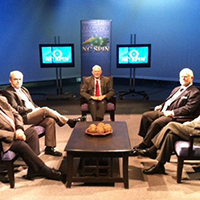It's time for NC to follow the lead of its classroom teachers
Published April 9, 2020
Here’s what we knew before the pandemic:
Technology empowers students. They become more efficient and productive. Significantly, digital learning prepares them for jobs that don’t exist yet.
We knew North Carolina was the first state in the nation to supply every public K-12 classroom with broadband internet access.
We also knew there were gaps. Districts and schools incorporated technology in different ways and at different levels. Teachers needed the opportunities to train on these digital tools. Moreover, many North Carolina students lost internet access the moment they boarded the bus home.
In fact, 3 percent of Wake County K-12 students don’t have access to a computer at home and 13 percent don’t have the high-speed internet needed to watch video. In Charlotte-Mecklenburg County, 5 percent of students don’t have computers and 20 percent don’t have high-speed internet.
In Halifax County, a staggering 21 percent of students don’t have access to a computer at home and 56 percent don’t have the high-speed internet in their homes required to keep up in a digital learning environment.
We knew digital learning could transform education, and we knew the gaps existed. Those were dots we were working to connect.
Then the COVID-19 global pandemic hit. Suddenly, teachers and districts across the state had to connect those still disconnected dots and pivot their classrooms to a digital environment overnight. Parents, suddenly charged with providing supplemental education for their children, are still scrambling to provide learning opportunities as well as social and emotional support while also working and navigating this unprecedented time.
The response from districts has been awe-inspiring. Teams are packing meals to feed those who depend on school breakfast and lunch for nutritious meals. In some areas, bus drivers are delivering portable Wi-Fi connectors to children in need of reliable internet access, but in other areas children are still stranded.
Teachers are recording themselves reading books to students they can’t see. They’re hosting lunches on Zoom to see the faces they miss. They’re calling each student’s house to check on every family on their roster – all while some are juggling the care of their own families.
Districts and teachers have been thrown into the deep end, and they’ve had to adjust quickly and with little insight into what the future may hold.
The inequities we knew before instantly moved to the forefront when we closed our schools. Debates began over whether we move forward with curriculum digitally so students can continue the school year. If we do, we leave behind many disadvantaged children. If we don’t, what are the repercussions when students return in the fall? It’s a question we, as a state, are still answering.
Districts are responding in different ways, but teachers are all responding with one goal in mind: Provide North Carolina students with access to quality education and support.
They’ve also extended that support to each other. Our state’s teachers are banding together to teach one another all the new software and technology they’ve been thrown into. They hold training sessions and allow their colleagues to observe their digital classes, all in the hope of figuring this out together.
Teachers are making history in this uncertain time. They’re changing. They’re adapting. They’re leading.
Now it’s time to determine how we, as a state, can follow their lead. As we navigate this new normal, we have to give teachers in every district the guidance and resources to educate our children.
This is not an anomaly. We cannot brush this aside as a one-time problem. This pandemic has pushed us into a place of digital learning, and it’s here to stay. Our classrooms will forever be changed by this. We need to set new priorities to prepare for that.
Technology is no longer an extra but an essential to schools and to homes.
When we come out of this, and we will, we must take these lessons we’re learning and turn them into action. Students need us to close the educational gaps created by a lack of resources. Teachers need our support, equipment, and micro-credential training to better prepare for a classroom that blends traditional and digital learning.
It’s going to be a new world, but our teachers have already proven they’re ready to lead the way. We’ve all had the conversations where we say teachers deserve more – more money, more resources, more assistance, etc. We all know they’re playing an important role in our society.
So let’s show them. Turn those conversations into action with the salary, support, and resources to push our state’s public schools to be the best in the nation.







